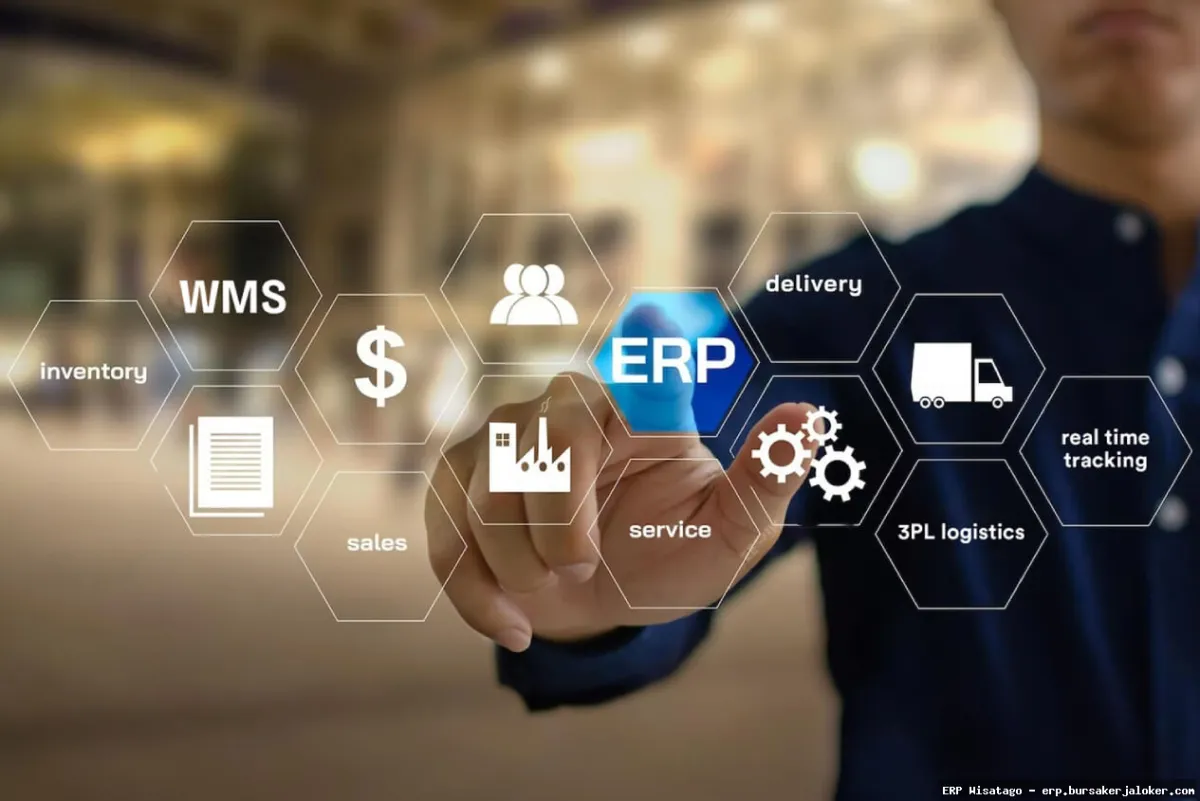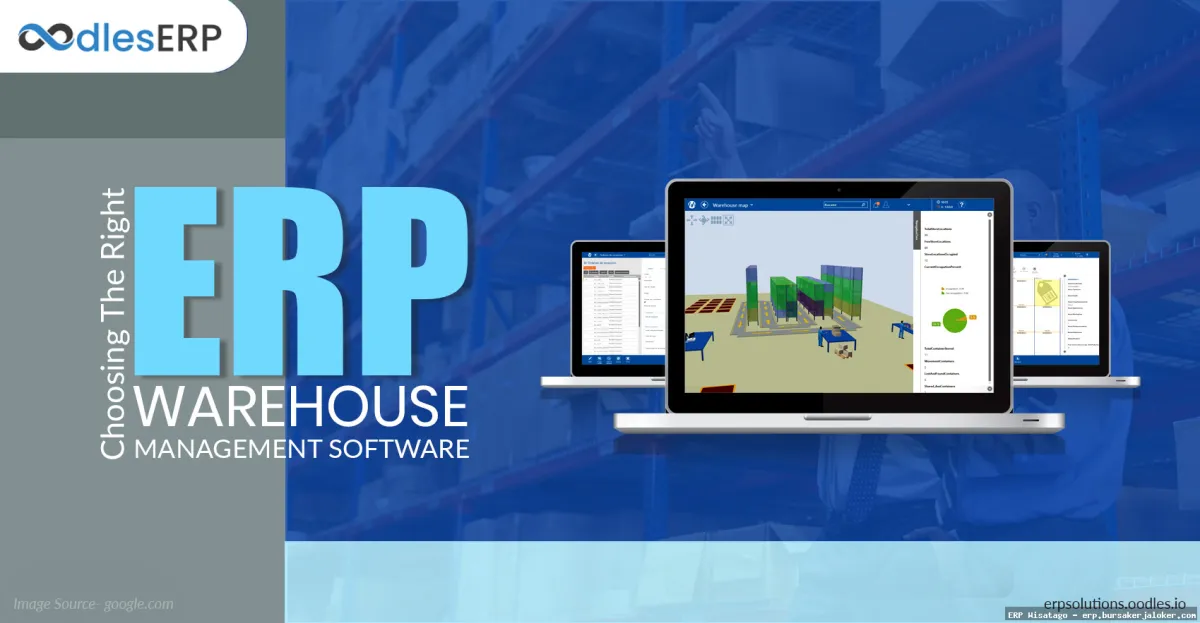Let’s face it: warehouse management can be a chaotic dance of inventory, orders, and shipping, especially as your business grows. Spreadsheets might have worked initially, but they quickly become unwieldy, prone to errors, and simply unable to keep pace with the demands of a thriving operation. That’s where Enterprise Resource Planning (ERP) systems come in, offering a comprehensive solution to streamline warehouse operations and integrate them seamlessly with the rest of your business.
I’ve seen firsthand how ERP can transform a struggling warehouse into a well-oiled machine. I’ve also witnessed the pitfalls of poorly planned implementations. The key is understanding what ERP is capable of, identifying your specific warehouse needs, and choosing a system that aligns with your long-term business goals. This isn’t just about automation; it’s about gaining visibility, improving efficiency, and ultimately, boosting your bottom line.

This guide aims to provide a comprehensive overview of ERP for warehouse management, covering everything from core features and benefits to implementation strategies and vendor selection. We’ll explore how ERP can address common warehouse challenges, discuss the key considerations for choosing the right solution, and share practical insights to help you navigate the ERP adoption process successfully. Consider this your starting point for understanding how ERP can revolutionize your warehouse operations.
What is ERP for Warehouse Management?
ERP for warehouse management refers to the integration of warehouse management functionalities into a broader ERP system. This means that instead of using a standalone Warehouse Management System (WMS), warehouse operations are managed within the same platform that handles other business functions such as finance, accounting, human resources, and customer relationship management (CRM). This unified approach eliminates data silos, improves communication between departments, and provides a holistic view of the business.
Key Differences Between ERP and WMS
While both ERP and WMS aim to optimize warehouse operations, they differ in scope. A WMS is specifically designed for managing warehouse-related processes, such as receiving, putaway, picking, packing, and shipping. An ERP, on the other hand, encompasses all aspects of a business, with warehouse management being just one module. Think of it this way: a WMS is a specialized tool for warehouse tasks, while an ERP is a comprehensive business management platform that includes warehouse management capabilities.
- Scope: WMS focuses solely on warehouse operations, while ERP covers all business functions.
- Integration: ERP provides seamless integration between warehouse management and other departments, while WMS may require integration with other systems.
- Functionality: WMS offers advanced features for warehouse-specific tasks, while ERP provides a broader range of functionalities, including finance, accounting, and CRM.
Core Features of ERP Warehouse Management Modules
A robust ERP warehouse management module should offer a comprehensive suite of features to streamline warehouse operations and improve efficiency. Here are some of the core functionalities you should expect:
Inventory Management
This feature provides real-time visibility into inventory levels, locations, and movements. It allows you to track inventory across multiple warehouses, manage stock levels, and optimize inventory replenishment strategies. Advanced inventory management features may include:
- Real-time tracking: Monitor inventory levels in real-time, ensuring accurate stock counts and preventing stockouts.
- Lot and serial number tracking: Track individual items by lot or serial number, enabling traceability and facilitating recalls.
- Inventory optimization: Optimize inventory levels based on demand forecasts and historical data, minimizing holding costs and maximizing availability.
Receiving and Putaway
This functionality streamlines the receiving process, ensuring accurate and efficient receiving of goods. It also optimizes the putaway process, directing warehouse staff to the most appropriate storage locations based on factors such as product type, size, and demand.
- Automated receiving: Automate the receiving process by scanning barcodes or using RFID tags.
- Directed putaway: Direct warehouse staff to the optimal storage locations, minimizing travel time and maximizing space utilization.
- Cross-docking: Facilitate cross-docking operations, moving goods directly from receiving to shipping without storing them in the warehouse.
Order Management and Fulfillment
This feature manages the entire order fulfillment process, from order entry to shipping. It allows you to track orders, allocate inventory, generate picking lists, and manage shipping processes.
- Order tracking: Track the status of orders in real-time, providing customers with up-to-date information on their orders.
- Wave picking: Group orders into waves for efficient picking, minimizing travel time and maximizing throughput.
- Shipping integration: Integrate with shipping carriers to automate shipping processes and generate shipping labels.
Picking and Packing
This functionality streamlines the picking and packing process, ensuring accurate and efficient order fulfillment. It supports various picking methods, such as zone picking, wave picking, and pick-to-light.
- Pick-to-light: Use light-directed picking to guide warehouse staff to the correct items, reducing errors and improving efficiency.
- Voice picking: Use voice commands to guide warehouse staff through the picking process, freeing up their hands and improving accuracy.
- Automated packing: Automate the packing process with automated packing machines, reducing labor costs and improving efficiency.
Shipping and Delivery
This feature manages the shipping and delivery process, ensuring timely and accurate delivery of goods. It allows you to track shipments, manage delivery schedules, and generate shipping documents.
- Real-time shipment tracking: Track shipments in real-time, providing customers with up-to-date information on their deliveries.
- Delivery scheduling: Manage delivery schedules and optimize delivery routes, minimizing transportation costs and improving delivery times.
- Proof of delivery: Capture proof of delivery electronically, providing confirmation that goods have been delivered successfully.
Reporting and Analytics
This feature provides insights into warehouse performance, allowing you to identify areas for improvement and make data-driven decisions. It generates reports on key performance indicators (KPIs) such as inventory turnover, order fulfillment rates, and warehouse utilization.
- Customizable dashboards: Create customizable dashboards to track key performance indicators (KPIs) and monitor warehouse performance.
- Real-time reporting: Generate real-time reports on inventory levels, order fulfillment rates, and other key metrics.
- Data analysis: Analyze warehouse data to identify trends, patterns, and areas for improvement.
Benefits of Implementing ERP for Warehouse Management
Implementing ERP for warehouse management can bring numerous benefits to your organization, including:
Improved Inventory Accuracy
Real-time inventory tracking and automated processes reduce errors and improve inventory accuracy, leading to fewer stockouts and reduced inventory holding costs.
Increased Efficiency
Streamlined processes and automated tasks improve warehouse efficiency, allowing you to process more orders with fewer resources.
Reduced Costs
Improved inventory management, increased efficiency, and reduced errors lead to lower operational costs and increased profitability.
Enhanced Visibility
A unified platform provides a holistic view of the business, enabling better decision-making and improved collaboration between departments.
Improved Customer Satisfaction
Faster order fulfillment, accurate deliveries, and real-time order tracking lead to improved customer satisfaction and increased loyalty.

Challenges of ERP Implementation in Warehouse Management
While the benefits are substantial, ERP implementation isn’t without its challenges. I’ve seen companies struggle with:
High Implementation Costs
ERP systems can be expensive to purchase, implement, and maintain. This includes software licenses, hardware upgrades, consulting fees, and training costs. Thoroughly assess the total cost of ownership (TCO) before committing. For more information, you can refer to RMM as an additional resource.
Complexity and Customization
ERP systems can be complex, requiring significant customization to meet specific business needs. Over-customization can lead to increased costs, longer implementation times, and difficulty upgrading the system in the future.
Data Migration
Migrating data from legacy systems to the new ERP system can be a complex and time-consuming process. Data cleansing, transformation, and validation are crucial to ensure data accuracy and integrity.
User Adoption
Getting employees to embrace the new system can be a challenge. Resistance to change, lack of training, and poor communication can hinder user adoption. A well-planned change management strategy is essential.
Choosing the Right ERP Solution for Your Warehouse
Selecting the right ERP solution is crucial for a successful implementation. Here are some key considerations:
Assess Your Specific Needs
Identify your specific warehouse requirements and business goals. What are your current pain points? What improvements are you hoping to achieve with ERP? Define your needs clearly to ensure that the chosen solution meets your requirements.
Consider Scalability
Choose a solution that can scale with your business as it grows. The ERP system should be able to handle increasing transaction volumes, expanding product lines, and new warehouse locations.
Evaluate Integration Capabilities
Ensure that the ERP system can integrate seamlessly with other systems, such as e-commerce platforms, shipping carriers, and CRM systems. This will enable data sharing and streamline business processes.
Check Vendor Reputation and Support
Research the vendor’s reputation and track record. Read online reviews, talk to other customers, and assess the vendor’s support capabilities. A reliable vendor with strong support is essential for a successful implementation.
Consider Cloud vs. On-Premise Deployment
Decide whether you prefer a cloud-based or on-premise deployment. Cloud-based solutions offer lower upfront costs and easier maintenance, while on-premise solutions provide greater control over data and infrastructure. Evaluate the pros and cons of each option based on your specific needs and resources.
Tips for Successful ERP Implementation
Here are some tips to help you ensure a successful ERP implementation:
Plan Thoroughly
Develop a detailed implementation plan that outlines the project scope, timeline, budget, and resources. Involve all stakeholders in the planning process to ensure everyone is on the same page.
Invest in Training
Provide comprehensive training to all users of the ERP system. This will help them understand the system’s features and functionalities and improve their productivity.
Manage Change Effectively
Implement a change management strategy to address employee resistance and promote user adoption. Communicate the benefits of the new system clearly and provide ongoing support to users.
Monitor Progress and Make Adjustments
Track the progress of the implementation and make adjustments as needed. Regularly monitor key performance indicators (KPIs) to ensure that the implementation is on track and delivering the expected benefits.

Go Live with a Pilot Program
Consider implementing the ERP system in a pilot program before rolling it out to the entire organization. This will allow you to identify and address any issues before they impact the entire business.
In conclusion, ERP for warehouse management offers a powerful solution for streamlining operations, improving efficiency, and gaining a competitive edge. By carefully planning the implementation, choosing the right solution, and managing change effectively, you can unlock the full potential of ERP and transform your warehouse into a strategic asset.
Frequently Asked Questions (FAQ) about ERP for warehouse management
What is ERP for warehouse management?
ERP for warehouse management is a topic that many people search for information about. This article provides comprehensive and reliable information about ERP for warehouse management to help you understand it better.
Why is ERP for warehouse management important?
ERP for warehouse management has an important role because it can help you get the information you need. Understanding ERP for warehouse management will provide benefits and advantages for you.
How can I get more information about ERP for warehouse management?
For more information about ERP for warehouse management, you can read the complete article above or contact relevant official sources. We also recommend that you always update your information as details can change over time.
